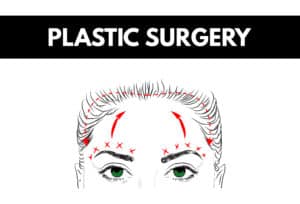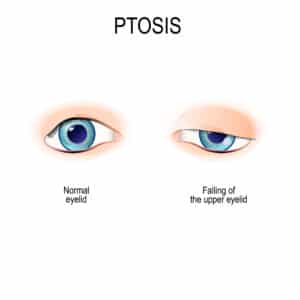Facial rejuvenation can increase your confidence and change your life. It can also treat some health conditions.
There are many procedures and treatments to consider when you want to look younger. Keep reading to learn the essentials to know about undergoing facial rejuvenation!
Botox

Botox is a small-dose cosmetic injection. It’s the only FDA-approved treatment that temporarily reduces the appearance of fine lines and wrinkles on the face.
Botox is made from botulinum toxin type A. The botulinum toxin works by targeting the cause of wrinkles and facial lines.
These wrinkles appear because of muscle contractions that occur when you smile, laugh, frown, squint, and more. When a doctor injects Botox into the muscles, it temporarily reduces muscle activity. After Botox, you’ll see lines and wrinkles on your face begin to smooth out.
People may use Botox to reduce the appearance of wrinkles like crow’s feet around the eyes. It is also helpful for health conditions like blepharospasm or uncontrolled blinking.
An eye doctor may recommend Botox to treat strabismus or misaligned eyes. During the procedure, they’ll apply numbing drops to the eye. Then, they will ask you to look a certain way to contract the muscle.
The eye doctor injects about 0.1 milliliters of Botox into the area. The injection numbs the muscle, which can realign the eye.
Botox lasts three to 12 months and is not safe for pregnant people or those who are breastfeeding.
Benign essential blepharospasm is a brain disorder that causes the muscles around the eyes to spasm. Early symptoms include blinking and eye twitching. Botox injections may reduce or stop the spasms by relaxing the muscles.
Dermal Fillers

Dermal fillers are gel-like materials that can plump up the skin. Fillers are great for adding volume to the lips and reducing wrinkles around the eyes and mouth.
Fillers may be made with autologous fat or polymethylmethacrylate. Some contain poly-l-lactic acid, while others feature calcium hydroxylapatite or hyaluronic acid.
Before you can get a dermal filler, you’ll first have a pre-treatment consultation. Your doctor will go over your medical history and health, like allergies and medications. You’ll also discuss your goals for getting filler and where you’d like to have it distributed for the best results.
During the treatment, expect a nurse to clean the area where you will get injections. You may have a topical numbing medication like lidocaine administered to limit pain. Your doctor will inject the filler beneath the skin.
You may see a change immediately. Some people have inflammation and minimal bruising at the site of injection, which is normal and should go away after a day or two.
You can go about your day as usual after this procedure. Your doctor will recommend avoiding strenuous activity and exercise to ensure the filler sets where it’s placed.
Dermal filler results often last six to 18 months. The thicker the material and the deeper the injection, the longer the filler will remain visible.
Brow Lift

Brow lifts are also known as forehead lifts. You may want this procedure to raise your eyebrows or treat frown lines and wrinkles. It can be done endoscopically or with a coronal incision.
On the day of the procedure, you’ll receive general or intravenous anesthesia. For an endoscopy, your surgeon will create a tiny incision near your hairline and insert an endoscope to reduce any visible scarring. They use this thin tube with a camera and tiny instruments to adjust forehead muscles.
If you’re getting a coronal incision, your surgeon creates an incision slightly above the hairline where it’s less visible. They will then lift the forehead skin and adjust the muscles before replacing the skin flap.
Both procedures end with absorbable or removable sutures. Some surgeons prefer using skin adhesives, while others use specialized clips.
You will notice some bruising and swelling around the incision and forehead. Complete healing occurs within several weeks.
Eyelid Surgery
If you have a condition called ptosis, you may need eyelid surgery to correct it. Ptosis occurs when the upper eyelid droops.

Some people have minor drooping. Others struggle to see because the lid covers the pupil. People of any age can have this condition.
Ptosis often occurs as a result of age or due to injury-related levator muscle issues. Eye doctors can treat ptosis with surgery to tighten the muscles. Children may have their levator muscles adhered to other muscles that will help move the eyelid.
An eyelid surgery like blepharoplasty is an outpatient procedure. During a pre-surgery appointment, you’ll discuss your medical history and the medications you currently take with your eye doctor.
When it’s time for the procedure, the surgeon will administer a light general anesthetic. You will be awake but very relaxed. The surgeon will make a small cut into the eyelid and stitch the levator muscles to the eyelid connective tissue.
They may have you move your eye to look certain ways. These movements help the surgeon ensure they are manipulating the muscle correctly for the eyelid to open.
The surgeon finishes the procedure by closing the incision. The scar is in the eyelid crease, making it difficult to see.
Eyelash Growth

Latisse is a topical eyelash treatment that increases lash growth. You may use this FDA-approved medication daily on your upper lashes to encourage lengthening. Results are visible within 2 months of daily use.
The bimatoprost ophthalmic solution was originally developed to treat glaucoma. When patients noticed their lashes lengthening, the manufacturer reformulated the drug for cosmetic use. Latisse can also be used to treat a hair growth disorder called hypotrichosis.
Ready to feel more confident and like yourself again? Schedule an appointment to learn about the facial rejuvenation services available at Takle Eye Group in Griffin, GA, today!




